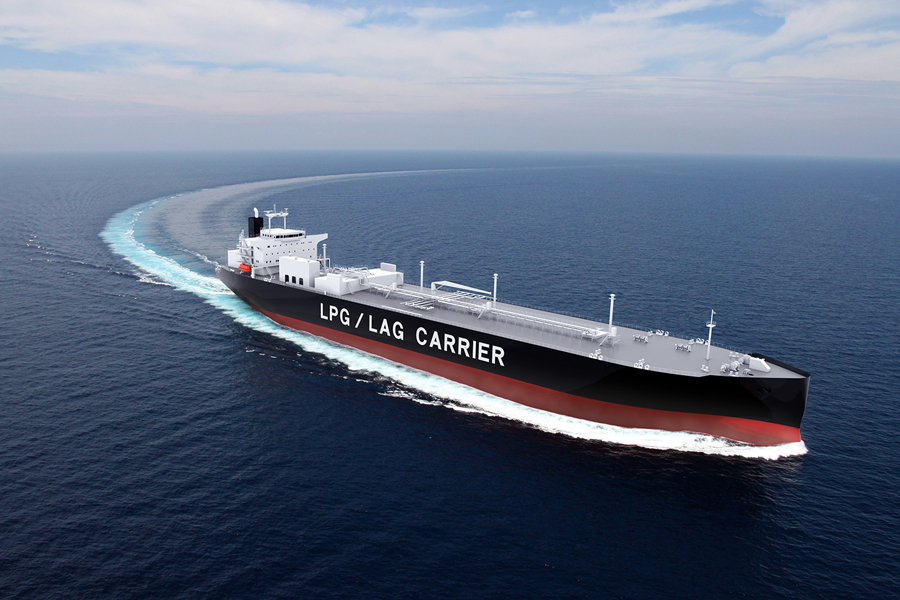Ammonia-powered vessels & maritime engines: development updates
By Julian Atchison on June 30, 2022
Enova funding for ammonia vessels

As part of the Enova program, the Norwegian government will grant $112 million (1.1 billion NOK) funding in total for five hydrogen production hubs and seven hydrogen & ammonia vessels. Although ammonia is not involved in any of the hydrogen production hub projects (which, taken together, will provide enough fuel for 35-40 vessels), one of the vessel-related grants is specifically for development of new ammonia-powered designs (Norwegian language). Færder Tankers Norway AS will receive $20 million in support to build four ammonia-powered, ocean-going vessels: two tankers and two car carriers.
Mitsubishi completes design of dual-fuel VLGC

Mitsubishi Shipbuilding has completed a conceptual design for an LPG-ammonia dual-fuel Very Large Gas Carrier, with Approval in Principle granted by ClassNK. The design is significant. Mitsubishi Shipbuilding has built more than 80 VLGCs in its history, and the new design will allow “small-scale retrofitting” of already-delivered vessels to run on ammonia fuel, and allow for the organisation to build & deliver ammonia-ready vessels as standard. Mitsubishi Shipbuilding’s newest VLGCs are all capable of carrying ammonia as a cargo, making the transition easier.
Höegh Autoliners update
Delivery dates have been set for the first group of Höegh’s Aurora-class, ammonia-powered car carriers. Built by China Merchants Heavy Industry in Jiangsu, China, two vessels will be delivered in the second half of 2024, with two more following every six months until early 2026 (eight in total). The main engine will be provided by MAN ES. Learn more about the Aurora-class in the below video:
WinGD, Hyundai Heavy Industries to team up on maritime two-stroke engines
WinGD and Hyundai Heavy Industries will collaborate to deliver the first WinGD two-stroke engine capable of running on ammonia. In December last year, WinGD announced their portfolio of maritime engines would be capable of running on ammonia fuel by 2025, and the partners will now work together to reach this goal. The project is particularly focused on retrofit options for two engine models: the diesel-fueled WinGD X-type, as well as the dual-fuel LNG X-DF engine.